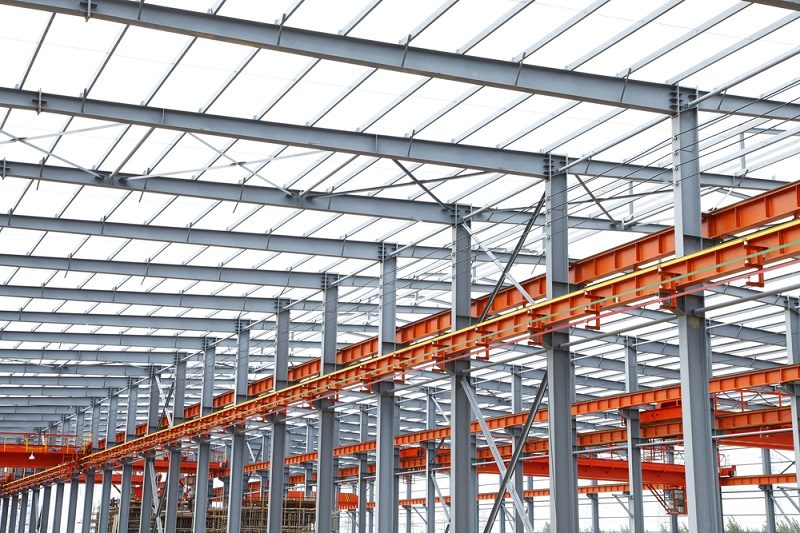Why Alpha Reo Is the Leading Choice for Steel Support
Wiki Article
Cutting-edge Fads in Steel Manufacture: Enhancing Longevity and Precision
In the realm of steel manufacture, the search of resilience and accuracy has actually led to a wave of innovative fads that are improving the industry. These trends are not just forming the present however additionally laying the groundwork for the future of steel construction, assuring further improvements in resilience and precision.Advanced Welding Technologies
In the world of steel construction, the adoption of cutting-edge welding technologies has dramatically revolutionized the market's approach to achieving superior high quality and accuracy in architectural welds. Advanced welding innovations, such as laser light beam welding and friction mix welding, have arised as game-changers in the field. By leveraging these innovative welding techniques, steel fabricators can boost the toughness, stamina, and precision of their architectural welds, fulfilling the increasingly requiring requirements of modern-day construction projects.Robotic Automation in Construction
Accepting robot automation has become a keystone of modern-day steel fabrication techniques, enhancing and improving procedures efficiency across the market. Robots are revolutionizing the means steel parts are manufactured, using unmatched accuracy and rate while reducing human mistake. These automated systems can manage repetitive tasks with constant accuracy, bring about higher high quality final result.One trick benefit of robot automation in steel manufacture is the ability to work all the time without tiredness, considerably enhancing manufacturing result. This continual operation reduces downtime and accelerates job timelines, inevitably saving costs for manufacturers. Additionally, robots can be programmed to carry out elaborate tasks that might be challenging or harmful for human workers, boosting security in the work environment.
In addition, robotic automation allows seamless combination with various other electronic innovations, such as computer-aided design (CAD) software application and Net of Things (IoT) systems (steel fixing). This interconnected method boosts communication between various phases of construction, enhancing process and making certain real-time tracking and control. As the steel manufacture sector remains to develop, robotic automation stands out as a transformative pressure driving effectiveness and precision in manufacturing procedures

High-Strength Alloy Development
The advancement of high-strength alloy growth in steel manufacture is improving the sector's strategy to enhancing material durability and performance. High-strength alloys are crafted to display remarkable mechanical residential or commercial properties, such as boosted tensile toughness, durability, and deterioration resistance compared to conventional steel qualities. By incorporating these advanced alloys right into construction procedures, makers can create components that endure higher stress and anxiety degrees and severe settings, bring about more resilient and reputable final product.One trick benefit of high-strength alloy advancement is the ability to decrease material density without endangering architectural integrity. This not only results in lighter-weight components however also adds to go to website set you back financial savings and boosted performance in manufacture and assembly processes. Furthermore, the improved strength-to-weight ratio of these alloys enables the layout and construction of frameworks with higher load-bearing abilities while decreasing general weight.
3D Modeling and Simulation Software Application
Advancements in steel construction procedures have been substantially thrust by the assimilation of advanced 3D modeling and simulation software program devices. These devices allow producers to produce in-depth digital models of their projects, allowing them to visualize the final item with precision before any manual labor begins. By replicating different stress and anxiety variables, ecological conditions, and structural lots, makers can enhance styles for improved durability and performance. In addition, 3D modeling and simulation software program enhance the production procedure by determining possible problems early, decreasing the demand for pricey rework and reducing material waste.
Lasting Practices in Steel Manufacturing
Incorporating lasting practices Alpha reo into steel manufacturing processes is crucial for reducing environmental influence and making sure long-term source accessibility. One vital sustainable method is the fostering of energy-efficient modern technologies to minimize greenhouse gas discharges during the steel production process. This consists of utilizing eco-friendly energy resources, such as solar or wind power, to power steel plants and implementing energy-efficient devices to optimize energy usage.Another critical aspect of lasting steel manufacturing is the liable sourcing of resources. This includes ensuring that the iron ore and various other sources used in steelmaking are obtained from honest and eco friendly resources. By advertising openness in the supply chain and sticking to stringent ecological standards, steel makers can reduce the adverse impacts of resource extraction on neighborhood ecosystems and neighborhoods.

Conclusion
Finally, the ingenious trends in steel construction such as innovative welding innovations, robotic automation, high-strength alloy advancement, 3D modeling and simulation software, and lasting methods are improving the longevity and precision of steel items. These developments are reinventing the steel fabrication look at this site sector by boosting sustainability, high quality, and performance. It is clear that the future of steel construction lies in accepting these cutting-edge modern technologies to satisfy the needs of modern construction and production industries.In the world of steel fabrication, the quest of resilience and precision has actually led to a wave of ingenious fads that are reshaping the industry.In the realm of steel fabrication, the adoption of sophisticated welding innovations has actually dramatically transformed the industry's strategy to attaining exceptional quality and precision in architectural welds. As the steel fabrication sector proceeds to advance, robot automation stands out as a transformative force driving efficiency and accuracy in manufacturing procedures.
Additionally, reusing and recycling steel scrap and waste products play a significant function in boosting the sustainability of steel manufacturing. metal fabrication melbourne.In verdict, the cutting-edge trends in steel fabrication such as innovative welding modern technologies, robot automation, high-strength alloy advancement, 3D modeling and simulation software program, and sustainable practices are enhancing the longevity and accuracy of steel products
Report this wiki page